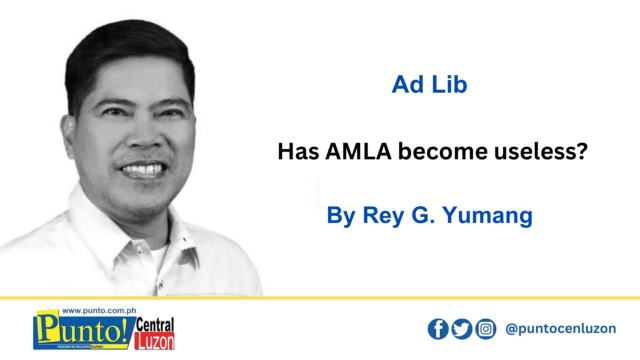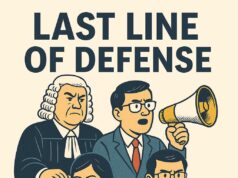ONE SAD reality that was highlighted in the ongoing Senate Blue Ribbon Committee hearing on the anomalous flood-control projects is this: opening a bank account in the country today is a test of patience and paperwork for the ordinary Juan’s, and a walk in the park for the high and mighty.
Try putting your hard-earned money in a bank and you would realize how the exhausting process seems to assume you are guilty until proven innocent. You need to present two government-issued IDs, a proof of billing, a certificate of employment or business registration. If you’re self-employed, you need to survive an equally grueling question-and-answer portion to explain how every single peso you earned is not laundered money.
But if you’re a politician, or a contractor with the right friends in Congress or at the city hall, the rules seem to bend magically, or even disappear conveniently.
As a former bank operations manager myself, I couldn’t help but wonder how hundreds of billions allegedly entered our financial system with little or no scrutiny at all. In fact, hundreds of millions were withdrawn regularly from a provincial branch, in cold cash and in broad daylight, without raising any suspicion.
What ever happened to the Anti-Money Laundering Act?
Enacted in 2001 and amended several times, the AMLA is supposed to be our shield against dirty money. It mandates that banks conduct “Know Your Customer” (KYC) procedures, report suspicious transactions, and ensure the legitimacy of large deposits. But when the rich and well-connected make those deposits, the red flags are nowhere in sight.
In 2021, the Bangko Sentral ng Pilipinas reported that over 44% of Filipino adults were unbanked, citing incomplete documents and lack of trust in the system. But can we blame them? When regular Filipinos get grilled over a ₱10,000 remittance, while a privileged few launder millions, sometimes under other people’s names, with the full cooperation or inaction of banks, the double-standard becomes unbearable.
Take the case of Marilou Lipana, the supposed housewife-turned-multi-millionaire involved in the scandal. She reportedly had multiple bank accounts in her maiden name – a blatant no-no. But the AMLA mechanisms didn’t kick in until the Senate dragged the issue into the sunlight. So, what were the banks doing? Were they playing blind, or just smart enough to know when not to ask questions?
Even regulatory bodies like the Securities and Exchange Commission have called for stripping public officials of their bank secrecy protections, admitting that the current laws allow corruption to flourish. And yet, legislation to lift bank secrecy for public officials remain stuck in the committee, like everything else that might inconvenience the powerful.
Clearly, the AMLA works only when it’s targeting OFWs sending money to their families, sari-sari store owners trying to open bank accounts, or freelancers depositing hard-earned cash. But when it’s about politicians and their bagmen moving obscene amounts of public funds, the AMLA becomes “Assume the Money Looks Acceptable.”
In addition to the massive corruption in flood-control projects, the Senate Blue Ribbon hearings have also shown the systemic inequality embedded in the very mechanisms meant to uphold financial integrity. Bank secrecy becomes a shield, not for privacy, but for impunity.
To be fair, the law is not broken; it never was. It is just being ignored. Even worse, it is selectively enforced when it is safe, convenient, or politically useful.





